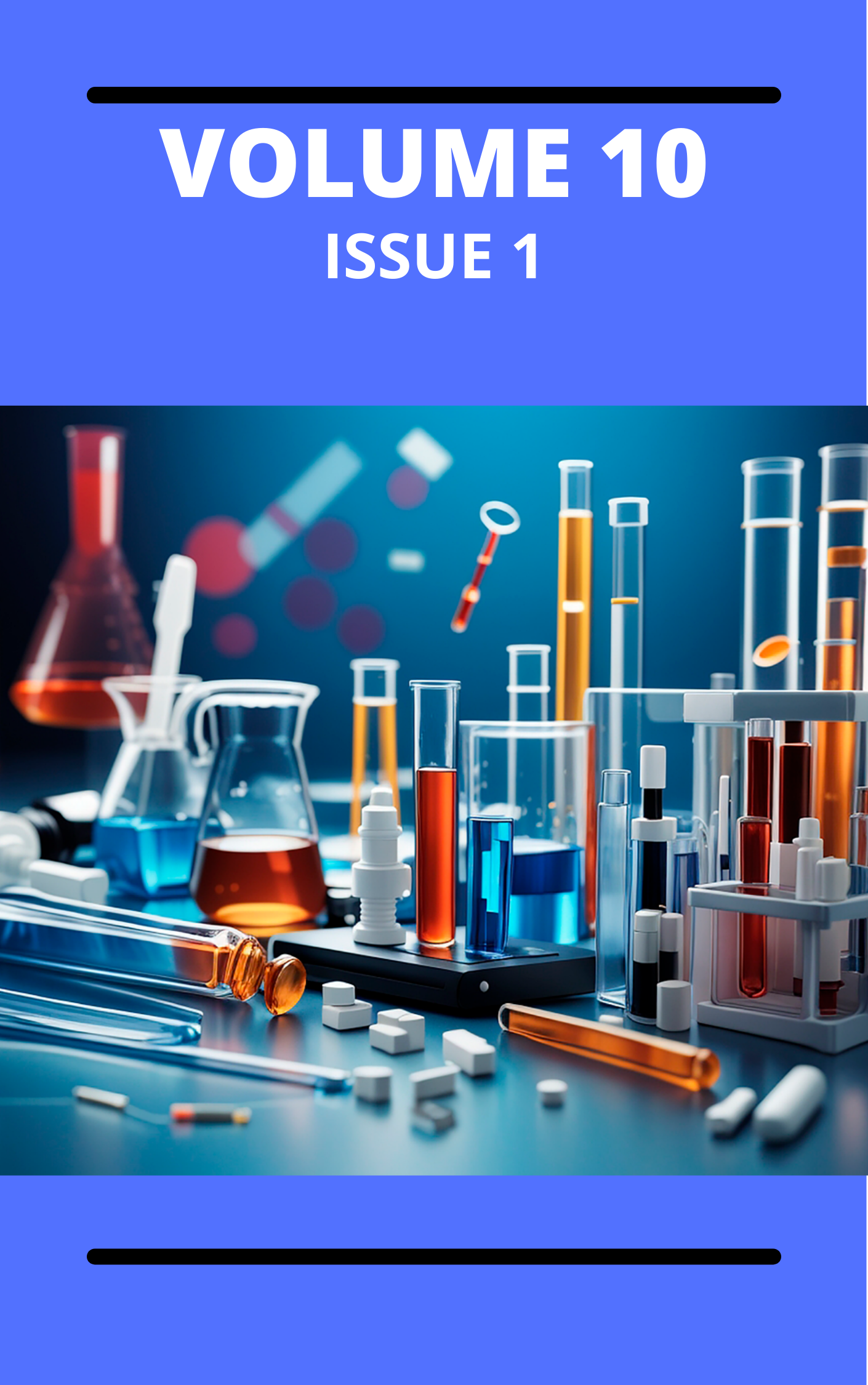Temperature Programmed Desorption Approach in Understanding the Development of Semiconductors and Catalyst
Keywords:
Desorption, Catalysis, Temperature Programmed, SemiconductorAbstract
This comprehensive article review delves into the extensive utility of temperature-programmed desorption (TPD) as a valuable technique for understanding the intricate development of semiconductors and catalysts. TPD serves as a powerful tool that provides profound insights into the surface chemistry of materials, enabling researchers to gain a comprehensive understanding of various crucial aspects. The article covers a wide range of TPD aspects, including the analysis of surface functional groups, system temperature control, the impact of oxidation and surface treatment, the significance of heat treatment, the dynamics of adsorption and desorption processes, the thermodynamics underlying TPD measurements, surface group characterization techniques, accurate analysis, and measurements considerations, and the importance of sequential surface treatment. By comprehending these multifaceted aspects, researchers can effectively optimize the performance of semiconductors and catalysts, as well as develop novel materials with enhanced properties. Ultimately, the article emphasizes the remarkable versatility and power of TPD in the dynamic realm of semiconductor and catalyst development.
Downloads
Published
Issue
Section
Similar Articles
- Oyebola Olusola Olurotimi, Belewu Fatai Damilola, Balogun Rilwan Oluwanishola,, Adegboyega Anthony Babajide, Oyebode Daniel Oluwatimilehin, Exploring the Thermoelectric Potential of Trigonal MgS2: A Computational Investigation Using DFT and Boltzmann Transport Theory , Communication In Physical Sciences: Vol. 11 No. 2 (2024): VOLUME 11 ISSUE 2
- Chigbundu C. Emmanuel, Adebowale O. Kayode, Equilibrium and Kinetics Studies of the Adsorption of Basic Dyes onto PVOH Facilely Intercalated Kaolinite - A Comparative Study of Adsorption Efficiency , Communication In Physical Sciences: Vol. 7 No. 4 (2021): VOLUME 7 ISSUE 4
- Agada Livinus Emeka, Sonloye Seyi Abiodun, Impacts of Temperature and Precipitation Variability in Northeast Nigeria: a Case Study of Yobe State , Communication In Physical Sciences: Vol. 8 No. 2 (2022): VOLUME 8 ISSUE 2
- Joseph Amajama, Ahmed Tunde Ibrahim , Julius Ushie Akwagiobe, Influence of Atmospheric Temperature on the Signal Strength of Mobile Phone Communication , Communication In Physical Sciences: Vol. 9 No. 4 (2023): VOLUME 9 ISSUE 4
- Sunday Emmanson Udoh, Analysis of The Impact of Climate Change on Meteorological Time-Series Data in Uyo , Communication In Physical Sciences: Vol. 12 No. 2 (2025): VOLUME 12 ISSUE 2
- Usman Mohammed Ibrahim, Agada Livinus Emeka, Impacts of Climate Change on Groundwater Resources in a Semi-Arid Region: A Case Study of Damaturu, Yobe State , Communication In Physical Sciences: Vol. 11 No. 3 (2024): VOLUME 11 ISSUE 3
- Mikyitsabu Ago Atoshi, Ataitiya Hyelalibiya, Production and Characterization of Chemically Activated Carbon from Khaya senegalensis Shell Waste , Communication In Physical Sciences: Vol. 9 No. 4 (2023): VOLUME 9 ISSUE 4
- Abidemi Emmanuel Adenij, Chaotic Signature in Power Spectrum and Recurrence Quantification of Dynamical Behaviour of Multivariate Time Series , Communication In Physical Sciences: Vol. 11 No. 2 (2024): VOLUME 11 ISSUE 2
- Nyeneime W. Akpanudo, Onyeiye Ugomma Chibuzo, Musanga cecropioides Sawdust as an Adsorbent for the Removal of Methylene Blue from Aqueous Solution , Communication In Physical Sciences: Vol. 5 No. 3 (2020): VOLUME 5 ISSUE 3
- Elizabeth Chinyere Nwakorongwu, Patricia Uchechi. Kanayochi-Okpechi, Ugochukwu Joseph, Effects of Annealing Temperature on the Dual Solution Synthesis and Optical Characterization of AlS: ZnS Thin Films , Communication In Physical Sciences: Vol. 11 No. 1 (2024): VOLUME 11 ISSUE 1
You may also start an advanced similarity search for this article.




